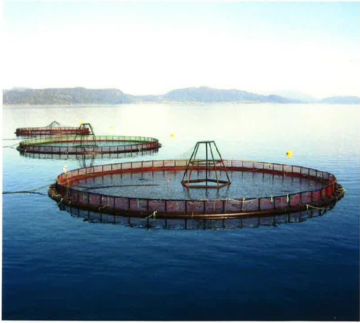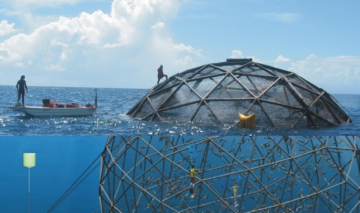(July 2, 2019) Currently, more than 50% of the seafood consumed in the world comes from aquaculture. Principal species include salmon, shrimp, tilapia, swai, sea bass, and catfish. Some upcoming species in aquaculture are tuna, hamachi (yellowtail kingfish), grouper, cobia, and snapper. Shrimp, catfish, and swai culture typically occurs in ponds, whereas the majority of large volume aquaculture harvest comes from offshore net pens such as salmon farming in Chili and Norway. Land based RAS (recirculated aquaculture systems) are becoming more popular due to advances in technology and equipment. Market driven species such as grouper and snapper hold an important position in the future of aquaculture.
Having sustainable supplies of seafood are of great environmental importance, in order to reduce pressure on commercially targeted species in the ocean. There is a delicate balance that must be maintained in our ecosystem, and constant pressure on one side causes an unbalance, threatening resources and ecosystems. Man-made pollution of the environment (such as the disaster at Fukushima or acidification of the oceans due to increased carbon output) creates additional pressure on the natural resources by putting aquatic species at risk and by reducing future opportunities for harvesting wild caught species.
Aquaculture species can be highly sustainable, food safe, nutritious, plentiful, delicious and affordable. Advances in fish husbandry lead to good yields, healthy stocks, and a constant supply of seafood items regardless of fluctuations in the natural environment. It has been thought by many that farmed fish is tasteless, full of hormones, and overall not good for you, while in fact, the truth is the exact opposite. It is possible to get drug free, healthy, nutritious seafood that is farm raised all over the world. Overfishing and rising ocean temperatures are causing wild fish populations to decline. Farming fish helps to combat that.
There are several different types of fish farming systems that can be used to culture fish. They can be either open ocean sea-cages or inland tank-systems. One newer type of open-ocean sea cage is called the Sea Station, which is a net pen that can be lowered in the water column to allow hurricanes to safely pass over it and raised when it’s time to harvest. It has a center “spar” or pole to give it stability and strength, and protects fish from predators by allowing water to flow through it. Designed for large-scale aquaculture, this system can produce 3,000 tons of fish per year.
The second newest style of submersible net-pen is called the Aqua Pod. Built as a full sphere based on the geodesic dome design, it is placed far offshore allowing fish to be cultured away from shallow stagnant water, producing healthier fish with less potential for disease. The Aqua Pod is made of recycled polyethylene plastic, and is a more sustainable option to create farms because it uses plastic that would otherwise be thrown away.
Fish ponds are the most common type of inland farm, and are more of a controlled artificial lake. This approach is most beneficial to fish because there is no risk of predators, and it makes automated feeding and temperature control easier.



